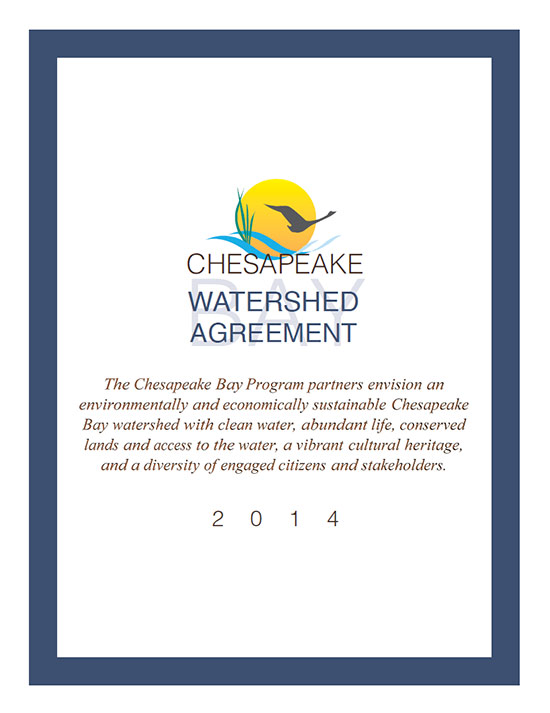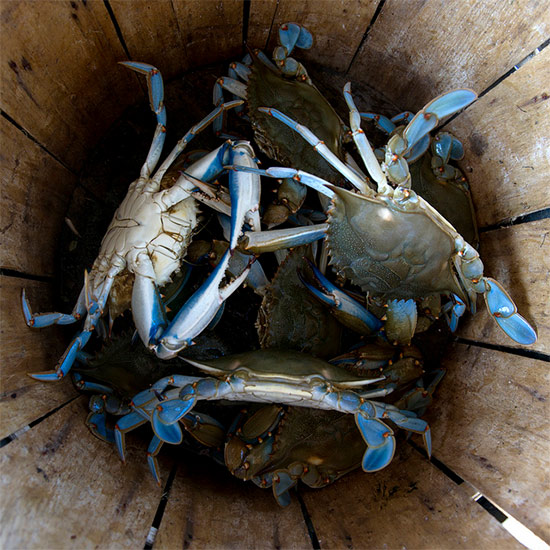Chesapeake Executive Council signs landmark accord to restore Bay watershed
The Watershed Agreement is a step toward clean water and abundant wildlife.
The Chesapeake Executive Council signed the Chesapeake Bay Watershed Agreement today, recommitting Chesapeake Bay Program partners to restoring, conserving and protecting the Bay, its tributaries and the lands around them.

Agreement signatories include the governors of Maryland, Virginia, Pennsylvania, New York, West Virginia and Delaware; the mayor of the District of Columbia; the chair of the Chesapeake Bay Commission; and the administrator of the U.S. Environmental Protection Agency (EPA) on behalf of the Federal Leadership Committee for the Chesapeake Bay. This marks the first time that the Bay’s headwater states of New York, West Virginia and Delaware have pledged to work toward those restoration goals that reach beyond water quality, making them full partners in the Bay Program’s watershed-wide work.
“Today we celebrate the most inclusive, collaborative, goal-oriented Agreement the Chesapeake Bay watershed has ever seen, highlighted by unprecedented participation from the headwater states and the public,” said Chesapeake Executive Council Chair and Maryland Gov. Martin O’Malley in a media release. “This Agreement not only addresses our continuing water quality and land use challenges, it also confronts critical emerging issues—environmental literacy, toxic contaminants and climate change. Finally, it builds upon the strength of our diverse citizenry, calling to action the nearly 18 million people that call our watershed home. Together, we can and will achieve our united vision of a healthy Bay and a productive watershed, cared for by engaged citizens at every level.”

Image courtesy Benjamin Wilson Imagery/Flickr
Years in the making, the Agreement contains 10 goals and 29 measurable, time-bound outcomes that will help create a healthy watershed. They will lower nutrient and sediment pollution; ensure our waters are free of toxic contaminants; sustain blue crabs, oysters and forage fish; restore wetlands, underwater grass beds and other habitats; conserve farmland and forests; boost public access to and education about the environment; and increase the climate resiliency of the watershed’s resources, habitats and human communities.
Public input had a direct impact on the content of the Agreement—encouraging partners to include goals related to environmental stewardship, toxic contaminants and climate change—and will continue to contribute to how the Agreement is achieved. Indeed, partners plan to work with universities, local governments, watershed groups, businesses and citizens in creating the management strategies that will define how we will accomplish the Agreement’s outcomes and goals.

Image courtesy USACE HQ/Flickr
In addition to signing the Chesapeake Bay Watershed Agreement, Executive Council members heard from the Bay Program’s three advisory committees, which represent citizens, local governments and scientific and technical interests from across the watershed. Executive Council members also heard from four high school students representing Maryland, Virginia, Pennsylvania and the District of Columbia. While each of these students was introduced to conservation in a different way, they have all had valuable experiences on the Bay and spoke about the importance of engaging future generations in environmental restoration, advocacy and leadership.
Learn more about the Chesapeake Bay Watershed Agreement or the 2014 Executive Council Meeting.

Comments
There are no comments.
Thank you!
Your comment has been received. Before it can be published, the comment will be reviewed by our team to ensure it adheres with our rules of engagement.
Back to recent stories